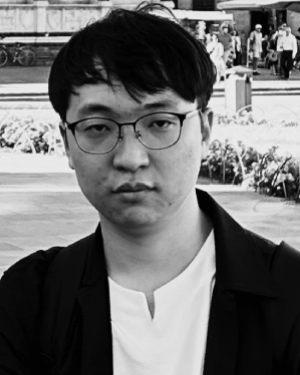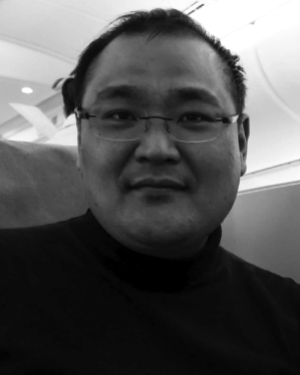Overview of the proposed system architecture and framework. It involves three key phases: data classification, where Nilsimsa is employed for analysis; detection, utilizi...
Abstract:
This paper introduces a novel method to detect WiFi-enabled spy cameras potentially invading user privacy via wireless streaming within a user’s vicinity. So far, there h...Show MoreMetadata
Abstract:
This paper introduces a novel method to detect WiFi-enabled spy cameras potentially invading user privacy via wireless streaming within a user’s vicinity. So far, there have been social initiatives to conduct spy camera inspections to address this issue, and academic societies have been working on various detection methods. However, such studies typically rely on additional specific efforts, such as using specialized equipment to gather channel state information (CSI) or collecting extensive long-term data per location for machine learning approaches. In addition, some ideas could not recognize features of spy camera data due to data encryption. Hence, this paper comes up with a novel scheme for detecting wireless spy cameras based only on off-the-shelf devices. To achieve these functionalities, the proposed scheme consists of three phases: 1) classification, 2) detection, and 3) localization. First, in the classification phase, the collected packet headers are analyzed to identify and classify the upstream streaming protocols. In addition, the proposed scheme fulfills the detection phase that exploits the Nilsimsa algorithm to analyze packet similarity, identifying potential spy cameras by detecting consistent high similarity patterns in the classified data traffic. Finally, the proposed approach provides the localization phase that captures and analyzes Received Signal Strength Indication (RSSI) values at the target location and spots the camera position. Unlike existing methods, the proposed scheme does not rely on extensive data collection per location and complex mechanisms to interpret encrypted data. Moreover, compared to machine learning (ML)-based positioning means, which require significant data sets and long-term computation time, the scheme achieves real-time detection with minimal computational demands.
Overview of the proposed system architecture and framework. It involves three key phases: data classification, where Nilsimsa is employed for analysis; detection, utilizi...
Published in: IEEE Access ( Volume: 12)

Department of Computer Engineering, Chungbuk National University, Cheongju, Republic of Korea
Hyeyoung An received the B.S. degree from the College of Computer Science, Chungnam National University, South Korea, in 2001, and the M.S. degree from the Department of Electrical and Computer Engineering, Chungbuk National University, in 2023. She is currently pursuing the Ph.D. degree with the Department of Computer Engineering, Chungbuk National University. Her research interests include networking technologies, sensi...Show More
Hyeyoung An received the B.S. degree from the College of Computer Science, Chungnam National University, South Korea, in 2001, and the M.S. degree from the Department of Electrical and Computer Engineering, Chungbuk National University, in 2023. She is currently pursuing the Ph.D. degree with the Department of Computer Engineering, Chungbuk National University. Her research interests include networking technologies, sensi...View more

Department of Computer Engineering, Chungbuk National University, Cheongju, Republic of Korea
Woojin Park (Student Member, IEEE) received the B.S. degree from the School of Computer Engineering, Chungbuk National University, South Korea, in 2023. He is currently pursuing the master’s degree with the Department of Computer Engineering, Chungbuk National University.
Woojin Park (Student Member, IEEE) received the B.S. degree from the School of Computer Engineering, Chungbuk National University, South Korea, in 2023. He is currently pursuing the master’s degree with the Department of Computer Engineering, Chungbuk National University.View more

Department of Computer Engineering, Chungbuk National University, Cheongju, Republic of Korea
Soochang Park (Member, IEEE) received the Ph.D. degree from Chungnam National University, South Korea, in 2011. He was with Rutgers University, USA, as a Postdoctoral Researcher, in 2012, and Institut Mines-Télécom, Telecom SudParis, France, as a Research Engineer, from 2013 to 2015. He was with The Hong Kong University of Science and Technology (HKUST), as a Research Associate, in 2016. Since 2017, he has been with Chung...Show More
Soochang Park (Member, IEEE) received the Ph.D. degree from Chungnam National University, South Korea, in 2011. He was with Rutgers University, USA, as a Postdoctoral Researcher, in 2012, and Institut Mines-Télécom, Telecom SudParis, France, as a Research Engineer, from 2013 to 2015. He was with The Hong Kong University of Science and Technology (HKUST), as a Research Associate, in 2016. Since 2017, he has been with Chung...View more

Department of Computer Engineering, Chungbuk National University, Cheongju, Republic of Korea
Hyeyoung An received the B.S. degree from the College of Computer Science, Chungnam National University, South Korea, in 2001, and the M.S. degree from the Department of Electrical and Computer Engineering, Chungbuk National University, in 2023. She is currently pursuing the Ph.D. degree with the Department of Computer Engineering, Chungbuk National University. Her research interests include networking technologies, sensing and data analytics, optimization, AI, and the IoT.
Hyeyoung An received the B.S. degree from the College of Computer Science, Chungnam National University, South Korea, in 2001, and the M.S. degree from the Department of Electrical and Computer Engineering, Chungbuk National University, in 2023. She is currently pursuing the Ph.D. degree with the Department of Computer Engineering, Chungbuk National University. Her research interests include networking technologies, sensing and data analytics, optimization, AI, and the IoT.View more

Department of Computer Engineering, Chungbuk National University, Cheongju, Republic of Korea
Woojin Park (Student Member, IEEE) received the B.S. degree from the School of Computer Engineering, Chungbuk National University, South Korea, in 2023. He is currently pursuing the master’s degree with the Department of Computer Engineering, Chungbuk National University.
Woojin Park (Student Member, IEEE) received the B.S. degree from the School of Computer Engineering, Chungbuk National University, South Korea, in 2023. He is currently pursuing the master’s degree with the Department of Computer Engineering, Chungbuk National University.View more

Department of Computer Engineering, Chungbuk National University, Cheongju, Republic of Korea
Soochang Park (Member, IEEE) received the Ph.D. degree from Chungnam National University, South Korea, in 2011. He was with Rutgers University, USA, as a Postdoctoral Researcher, in 2012, and Institut Mines-Télécom, Telecom SudParis, France, as a Research Engineer, from 2013 to 2015. He was with The Hong Kong University of Science and Technology (HKUST), as a Research Associate, in 2016. Since 2017, he has been with Chungbuk National University (CBNU), South Korea, where he has been an Associate Professor with the Department of Computer Engineering, since 2021. His research interests include networking technologies, sensing and data analytics, and mobile and the Internet of Things-based smart applications.
Soochang Park (Member, IEEE) received the Ph.D. degree from Chungnam National University, South Korea, in 2011. He was with Rutgers University, USA, as a Postdoctoral Researcher, in 2012, and Institut Mines-Télécom, Telecom SudParis, France, as a Research Engineer, from 2013 to 2015. He was with The Hong Kong University of Science and Technology (HKUST), as a Research Associate, in 2016. Since 2017, he has been with Chungbuk National University (CBNU), South Korea, where he has been an Associate Professor with the Department of Computer Engineering, since 2021. His research interests include networking technologies, sensing and data analytics, and mobile and the Internet of Things-based smart applications.View more

